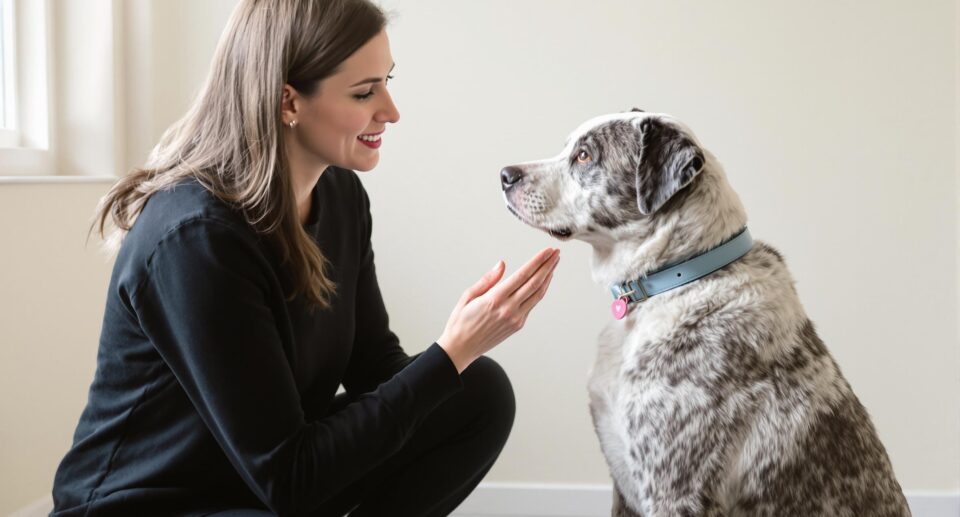
Just like humans, dogs can be deaf or hard of hearing. Caring for a dog with hearing loss will make you realize just how much we rely on our voices to communicate with our dogs. With a deaf dog, you’ll need to find new ways to train your pup, call them inside, and let them know it’s time for dinner.
Most deaf dogs have little trouble adapting to their disability. All they need is a loving family who’s willing to learn to communicate in ways they can understand. Otherwise, they’re just like any other dog, with the exception of their unique superpower: the ability to sleep through fireworks and thunderstorms.
Is My Dog Deaf?
If your new puppy is struggling with training, or your older dog isn’t responding to your voice like they once did, you might suspect that they are deaf.
It can be hard to tell whether your puppy is deaf, or just easily distracted. Does your pup twitch their ears when you squeeze a squeaky toy behind your back? Do they react to noises like a person knocking at the front door? A dog that’s simply not yet trained may seem to ignore you in distracting environments, but will typically still respond to your cues at home without distractions.
Congenital hearing loss is present at birth. It’s more common in dogs with a white or merle coat and certain breeds including the Dalmatian, Boston Terrier, Cocker Spaniel, and Bull Terrier.
Adult dogs can lose their hearing after an injury, from chronic ear infections, or when there is a growth or excessive ear wax blocking the ear canal. Age-related hearing loss is common in seniors. Some causes of deafness are treatable and reversible, so it’s worthwhile to see your vet even if you’re certain that your dog has lost their hearing.
Helping Your Deaf Dog
Some deaf dogs startle more easily because they cannot hear when someone is approaching them from beyond their range of vision. You and your family members will need to learn to make sure your dog can see you before reaching down and petting them. If you approach your dog while they’re napping, gently stroke their back to wake them up.
In general, people shouldn’t pet dogs without permission, but this is even more of a concern if your deaf dog is easily startled. You may find it helpful to use a leash or harness that says “deaf dog” in bright colors to let others know that they need to ask before they pet your dog.
Training A Deaf Dog
All dogs, hearing and deaf, can learn to respond to hand signals. Hand signals are very effective and can clearly communicate what you want your dog to do. The biggest hurdle you’ll have with your deaf dog is getting their attention in the first place. If your dog is not looking at you, they will not be able to respond to your hand signals.
There are several ways to get your deaf dog’s attention. If you’re indoors, you can tap on the floor with your foot to set off a vibration. You can also wave or “flash” your hand by quickly opening your hand in front of you. These attention-getting signals should be paired with a treat so your dog learns to be mindful of your body language.
You can also teach your dog to check in with you frequently. Reward them any time they come to you without being called, whether you’re indoors or spending time in a fenced backyard.
While some people use flashes of light to get their dog’s attention, this method is detrimental to your dog’s health. Your deaf dog’s other senses, including their vision, are heightened to make up for their hearing impairment. When they associate flashing lights or laser pointers with training, they can develop debilitating OCD-like behaviors, obsessing over lights, reflections, and shadows.
While raising a deaf dog has its challenges, you don’t have to go at it alone. Deaf Dogs Rock is a non-profit that helps deaf dogs in need, and they also have a helpful community that can answer any questions you might have about raising a dog with hearing loss. You can also ask your veterinarian to refer you to a behavior specialist who works with special needs dogs.





